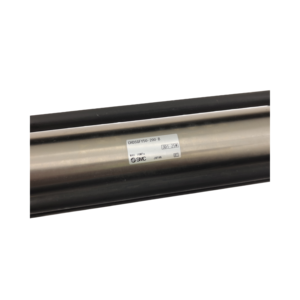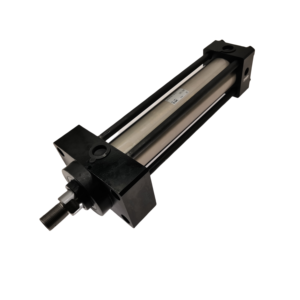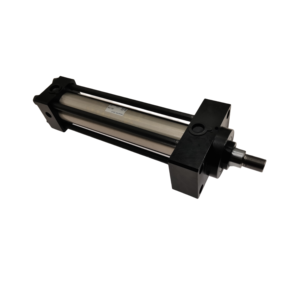
All categories
Featured selections
Trade Assurance
Buyer Central
Help Center
Get the app
Become a supplier

(58208 products available)




















SMC cylinders are the most popular pneumatic actuators. The major types of SMC cylinders include the following:
They are widely used in industrial automation and general machinery. SMC standard cylinders have a simple construction. The cylinders have a tube, a piston, and end caps. They come in two forms. Single-acting cylinders have one port. They are mainly used in applications where the load should be moved in one direction. Double-acting cylinders have two ports. The compressed air can enter and leave the cylinder through the ports. This enables the cylinder to move in both directions. SMC standard cylinders are usually made from aluminum or stainless steel. They are lightweight but strong.
SMC compact cylinders are smaller than standard ones. They are also called mini cylinders. The size makes them ideal for applications that have space restrictions. Even so, they deliver the same force and performance as standard cylinders. Therefore, they are suitable for tight spaces. SMC compact cylinders can also work in precision tasks. They have a small stroke length. The resolution and control are higher than those of other cylinders. SMC compact cylinders come in various models. They can be double-acting, single-acting, or guided. The construction materials are also different.
These cylinders are designed for special applications. They have unique features. Specialty SMC cylinders include tandem cylinders, stopper cylinders, and lock cylinders. Tandem cylinders have two or more pistons. They can produce more force than standard ones. Stopper cylinders have an extra mechanism to stop the piston rod. Lock cylinders can hold the load without using compressed air. Specialty cylinders come in different sizes. They have diverse options for stroke length and bore size. The distinct features and options make them suitable for various industries. These include the automotive, medical, and electronics sectors.
Specification of SMC cylinders
It refers to the inner diameter of the SMC pneumatic cylinder. The bore size determines the force output and load capacity of the cylinder. Common bore sizes for SMC cylinders range from 1/4 inch to 24 inches. Smaller bore sizes are suitable for lighter loads, while larger bore sizes are better for heavier tasks.
It refers to the distance the piston can move back and forth inside the cylinder. It affects the range of motion and positioning capabilities of the cylinder. Stroke lengths vary from a fraction of an inch to several feet. Choosing the right stroke length ensures the cylinder can achieve the desired movement and positioning.
It is the maximum air pressure the cylinder can withstand while operating. Operating pressure determines the force output and speed of the cylinder. Typical operating pressures for SMC cylinders range from 1 to 10 bar. Selecting a cylinder with the appropriate operating pressure ensures it can deliver the required force and speed.
SMC pneumatic cylinders require regular maintenance to ensure performance and prolong service life.
Here are some typical maintenance procedures for SMC cylinders:
Check the overall condition of the SMC cylinder, including the housing, piston, seals, and mounting connections. Look for signs of damage, corrosion, or leaks. If any issues are identified, address them promptly to prevent further damage or safety hazards.
Clean the external surface of the SMC cylinder regularly to remove dirt, dust, or debris. This prevents contaminants from entering the cylinder and causing internal damage. Use a clean, dry cloth or compressed air to gently wipe the cylinder. Avoid using solvents or abrasive cleaners that may damage the cylinder's surface.
Proper lubrication is important for SMC cylinders to reduce friction and seal wear. Apply the recommended lubricant to the cylinder's piston and seals. This helps maintain smooth operation and minimize energy consumption. Follow the manufacturer's guidelines for lubrication frequency and application methods.
Seals play a crucial role in maintaining the airtightness and smooth operation of SMC cylinders. Regularly inspect the seals for signs of wear, damage, or leakage. If any issues are found, replace the seals promptly with the correct type and size. This prevents air leaks and ensures the cylinder's performance.
By following these maintenance procedures, SMC cylinders can operate reliably and last longer, thereby reducing downtime and replacement costs.
An SMC pneumatic cylinder is suitable for a variety of applications across different industries. Here are some common scenarios for using SMC cylinders.
SMC cylinders play an essential role in car assembly lines. They are often used for tasks such as material handling, assembly, and welding. SMC cylinders help automate the production process, thereby improving efficiency and precision.
In the machine tool industry, SMC pneumatic cylinders are used for automated tool changes, clamping, and other tasks. The robust design of SMC cylinders ensures reliable performance even in demanding machining environments.
SMC cylinders are made of corrosion-resistant materials, making them suitable for food processing. In the food and beverage industry, SMC cylinders can be used for packaging, filling, and other automation applications.
SMC cylinders are used in the electronic equipment manufacturing industry for tasks such as soldering, dispensing, and assembly. With precise control and compact design, SMC cylinders can meet the automation needs of electronic equipment production lines.
In the medical device industry, SMC cylinders are used for precision positioning, handling, and other tasks. SMC cylinders meet the strict requirements of the medical industry for cleanliness, accuracy, and reliability.
SMC pneumatic cylinders are widely used in the construction industry for tasks such as lifting, pushing and pulling, and positioning. In construction machinery, SMC cylinders can be used in excavators, bulldozers, and other equipment to improve automation and efficiency.
In the textile industry, SMC cylinders are commonly used for tasks such as yarn feeding, fabric cutting, and machine positioning. The precise control and repeatability of SMC cylinders can improve the quality and efficiency of textile production.
Choosing the right pneumatic cylinder is crucial for ensuring proper machine performance. When it comes to selecting SMC cylinders, it is essential for buyers to consider the following factors.
First, determine the specific requirements of the application. This includes factors such as the load size, required force, movement speed, stroke length, accuracy, and the operating environment. By understanding these aspects, it becomes easier to choose an SMC cylinder that is suitable for the intended use.
Consider the size and dimensions of the SMC cylinder. Ensure it can fit into the existing space constraints of the machinery or equipment. Check the cylinder's bore size, stroke length, overall length, and mounting options.
Determine the required operating pressure and force of the cylinder. Consider the maximum loads that the machinery will have to handle. Select an SMC cylinder with the right bore size to provide sufficient force for the application.
Consider the mounting style and accessories needed for proper installation. Choose the right mounting configuration and any required accessories, such as brackets, linkage, or fittings.
Choose the appropriate seals and materials of the SMC cylinder for the application's operating environment. Consider factors like temperature, corrosion, and wear resistance. Ensure the cylinder's seals and construction materials are compatible with the operating conditions.
Consider the budget and select a reputable supplier of SMC cylinders. Compare options based on quality, support, and delivery. Discuss application requirements with the supplier and request any necessary technical details or assistance. Ensure the chosen SMC cylinder meets the performance needs of the machinery or equipment.
Q1: What is the difference between pneumatic cylinders and hydraulic cylinders?
A1: Pneumatic cylinders are powered by compressed air, while hydraulic cylinders are powered by hydraulic fluid. Hydraulic cylinders are suitable for higher force applications, while pneumatic cylinders are often used in applications where lighter force and faster speeds are required.
Q2: What is the difference between single-acting and double-acting cylinders?
A2: Single-acting cylinders use compressed air to exert force in one direction and a spring or fluid to return to the home position. Double-acting cylinders use compressed air to extend and retract the piston, providing force in both directions.
Q3: What is the difference between tie-rod and round body cylinders?
A3: Tie-rod cylinders have a more traditional square shape and use steel rods to provide additional support and stability. Round body cylinders have a round housing that is more compact and lightweight.